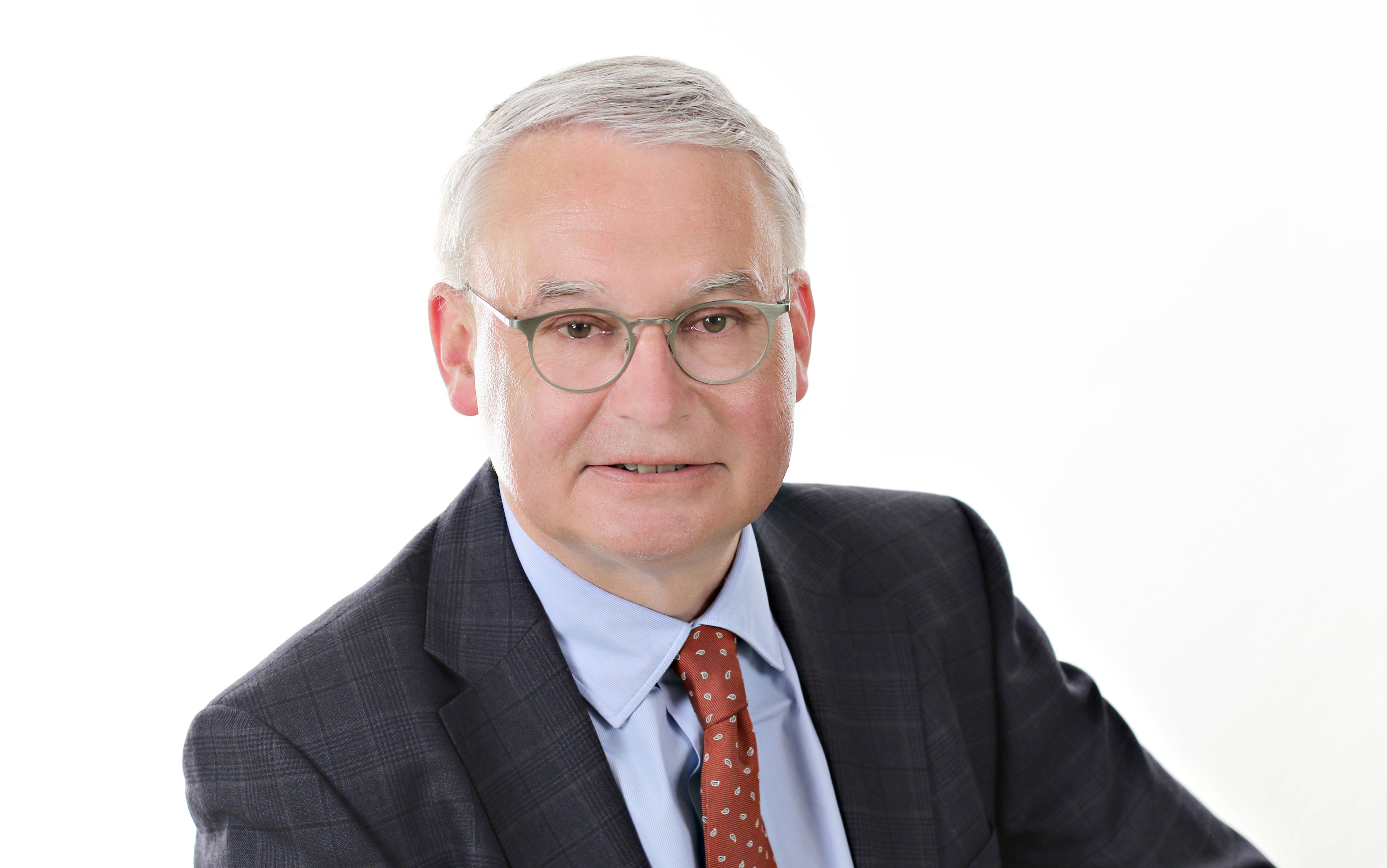Value-based healthcare
High-quality healthcare pays off
High-quality medical treatment is not only worthwhile for ill persons. The Division of Health Economics at the German Cancer Research Center in Heidelberg, headed up by Prof. Dr. Michael Schlander, together with researchers from Dresden, has carried out a cost-effectiveness analysis that shows that certified colon cancer centres provide not only better but also more cost-effective care than other clinics.
How much is a life worth? This is a fundamental question that health economists have to consider when they are asked to weigh the costs and benefits of medical therapies and determine whether they are financially viable. Worldwide, the financial burden on healthcare systems is rising continuously as medical options increase and populations grow older. To ensure that healthcare remains affordable, the profitability of clinics and care centres is therefore increasingly coming into focus. This is currently calculated on the basis of on-site costs in relation to immediate therapeutic success. The treatment measures are mostly standardized, and long-term effects are often not taken into account sufficiently or indeed at all.
The value-based healthcare concept
The concept of value-based healthcare (VBHC) focuses on patients with their needs and capabilities. The value of individual treatments is calculated on the basis of individual patient benefits in relation to the costs. An increase in value can therefore be achieved both through a reduction in costs and increased patient benefit. Benefit doesn’t just take into account one-dimensional effects such as survival or cure, but also side effects and sustainability of the therapy as well as subjective patient satisfaction.
The VBHC concept requires further development or even a restructuring of today's healthcare system, because patient-centred care can only be achieved with the help of multidisciplinary and multisite offerings. The distance between patient and the best possible care should be as short as possible and treatment should be tailored to personal circumstances. Therapeutic measures should not be applied in isolation, but considered holistically and over a longer time frame. This requires communication between clinics, downstream rehabilitation centres and doctors in private practice. Expensive, customized initial treatment with high benefits for patients can lead to lower costs over the long term, as fewer follow-up measures are then required.
Certified cancer centres offer higher quality and are more cost-effective
 Prof. Dr. Michael Schlander and his Division of Health Economics at the DKFZ in Heidelberg prepare cost-effectiveness analyses for medical treatments. © DKFZ Heidelberg
Prof. Dr. Michael Schlander and his Division of Health Economics at the DKFZ in Heidelberg prepare cost-effectiveness analyses for medical treatments. © DKFZ HeidelbergAn important step toward value-based healthcare in Germany is the certification of cancer centres, which is carried out by the German Cancer Society based on current oncology guidelines. Organ cancer centres (Cs – short for centres) specialize in a particular type of cancer, oncology centres (CCs – short for cancer centres) provide care for several tumour types, and oncology centres of excellence (CCCs -short for comprehensive cancer centres) at university sites provide care for a broad spectrum of cancers, incorporating the latest research findings and novel therapy concepts. What they all have in common is a network of inpatient and outpatient facilities in which all participating specialists from surgery, radiation oncology and pathology, as well as psychology, physiotherapy and nursing, are jointly responsible for comprehensive patient care.
"There are many studies that prove that certified centres function more successfully and bring higher quality to care. Among other things, this results in longer survival times for the patients concerned," reports Prof. Dr. Michael Schlander, an expert in health economics at the University of Heidelberg and head of the Division of Health Economics at the German Cancer Research Center (DKFZ), founded in 2017. "There are studies that show that treatments are even cheaper if the direct costs paid by health insurers are taken into account." This difference is down to avoidance of duplicate examinations, higher diagnostic quality and accuracy due to tumour boards (tumour conferences with different experts) and the consistent application of state-of-the-art treatment and quality assurance strategies.
Together with the Center for Evidence-Based Healthcare at the Technische Universität (TU) Dresden and the National Center for Tumour Diseases (NCT) in Dresden, Schandler, a human medicine specialist and economist, published a comprehensive cost-effectiveness analysis in late 2021, which also included in the calculations the cost of certifying the centres. Schlander explains: "These costs are borne by the operator of the facility, i.e., the state or city. They include administration, further education or documentation expenses, among other things." After evaluating the data of more than 6,000 patients with a colon cancer diagnosis, it became apparent that even when viewed in this way, treatment in certified centres is more cost-effective per individual patient. "We didn't necessarily expect this, and no one before us had shown it in this way," says Schlander, explaining the results published in the International Journal of Cancer.1)
For other tumour types, such as breast, prostate and pancreatic cancer, as well as head and neck cancer, the Dresden project partners led by Prof. Dr. Jochen Schmitt have already been able to show significant gains in survival rates when treatment is carried out in certified centres. Since sufficiently detailed information on the costs incurred is available for these types of cancer, a follow-up project in Heidelberg is currently examining the cost-benefit ratio in oncology centres of excellence for these types of cancer, starting with breast cancer.
Quality-adjusted life years as an evaluation criterion
 DKFZ main building: The German Cancer Research Center (DKFZ) in Heidelberg is one of 15 oncology centres of excellence in Germany. © Tobias Schwerdt
DKFZ main building: The German Cancer Research Center (DKFZ) in Heidelberg is one of 15 oncology centres of excellence in Germany. © Tobias SchwerdtHowever, the studies only include the value of a therapy in the form of extended lifespan, which can be measured objectively. But how can the quality of life be determined? And how does one weigh quality in relation to time? "A well-known problem of conventional chemotherapy is the trade-off: how much loss of quality is acceptable in certain phases in order to subsequently achieve an extension of life? In the end, is that really a net gain in benefit?" says Schlander, outlining the fundamental issues.
For this reason, quality-adjusted life years (QALYs), which are units of measurements for valuing health outcomes, are often included in health economic analyses. One QALY equates to one year in perfect health, while 0 indicates death. For example, the QALYs associated with 1 year living in blindness is 0.5 QALYs, which is equivalent to a quality of life of 50 percent, something that is certainly not supported by many people affected by impaired vision. Nevertheless, the QALYs are then used to compare different therapy concepts in terms of their ‘efficiency’.
Schlander takes a critical view of this method because, in addition to other limitations, it particularly fails to take into account the socioeconomic effects of an illness. Although patients in Germany only have to bear a small part of treatment costs themselves, they - as well as relatives who care for them - suffer financial disadvantages due to loss of income. Disease places a burden on an entire family and often has a negative impact on children’s development. These aspects would have to be included in a complete cost-benefit evaluation of early detection, diagnosis and therapy. For this reason, at Schlander’s initiative in 2021, a task force was established within the Health Economics working group of the Organization of European Cancer Institutes (OECI) to develop a methodological standard for future studies on this complex topic.
So far, the situation with certified colon cancer centres is clear: they work better and are more cost-effective. But what about for other diseases? What if better therapy is significantly more expensive? How much should a QALY cost? "Looking at all QALYs on the same financial scale is only superficially correct. Therapies for rare diseases are very expensive, but fortunately in our society such people are not left behind," Schlander says. "How do we measure this social value?" These are questions that need to be addressed not only by health economists, but by society as a whole, so that the VBHC concept can be implemented across the healthcare system.